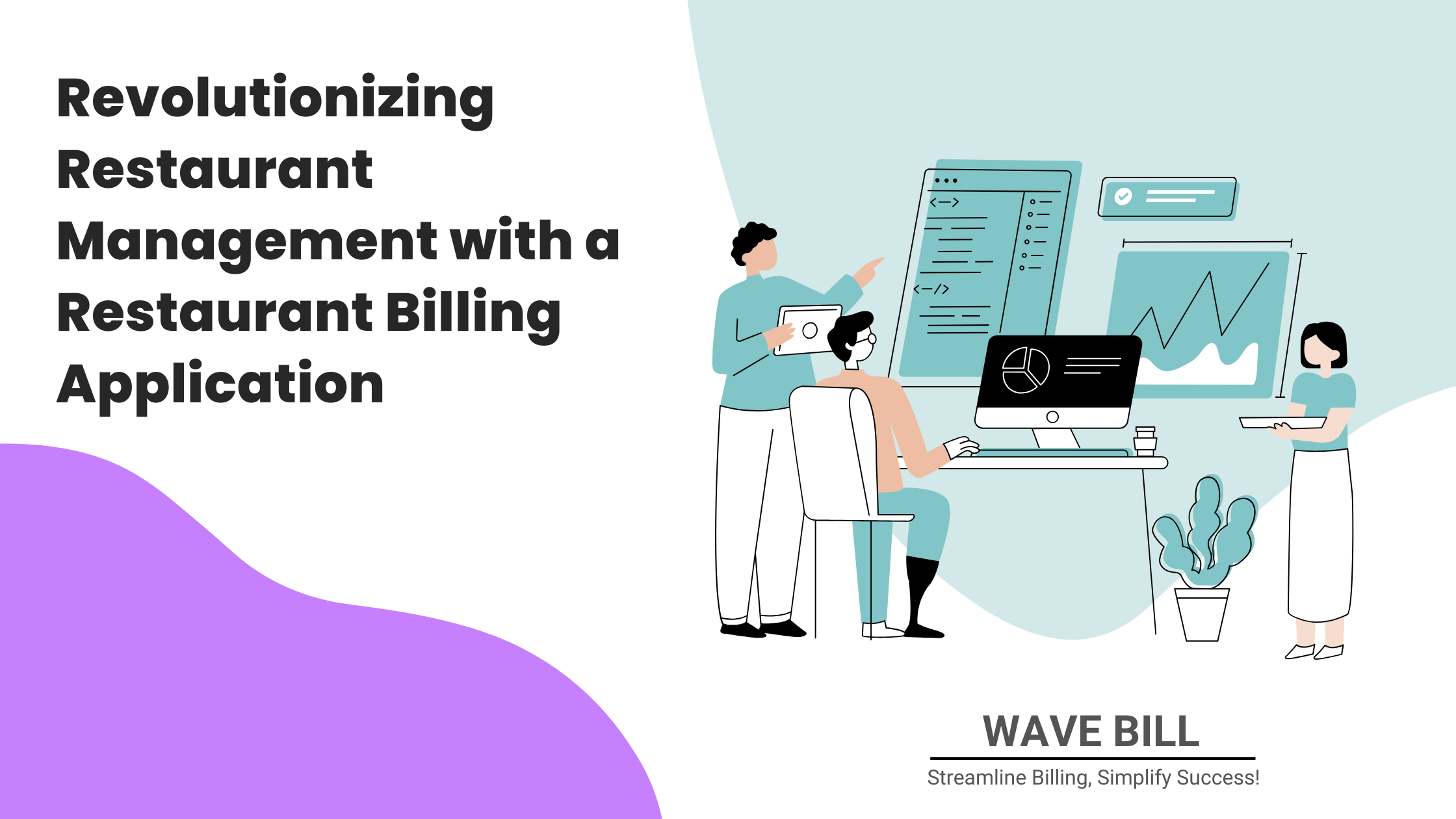
In today's competitive restaurant industry, efficiency, accuracy, and customer satisfaction are the cornerstones of success. From the moment a customer walks in to the time they pay the bill, every step needs to be seamless and hassle-free. One of the most essential tools to help achieve this is a restaurant billing application. This technology not only simplifies the billing process but also streamlines other facets of restaurant operations. If you're in the restaurant business and haven't yet integrated a billing solution, here's why a restaurant billing application might be the game-changer you need.
A restaurant billing application is a software system designed to manage and automate the process of generating bills, processing payments, and managing sales for restaurants. These applications are integrated with the restaurant's Point of Sale (POS) system and work to streamline the entire order-to-payment process, including order management, invoicing, payment processing, and reporting. It can be used across various restaurant types, from quick-service eateries to fine dining establishments.
Restaurants often deal with high-volume orders, multiple payment methods, and various customer requests, making traditional billing methods prone to errors and delays. A restaurant billing application solves these problems by automating and optimizing processes, improving both the front-of-house and back-end operations.
Here's why adopting a billing application is essential for modern restaurants:
- Faster Billing and Payment Processing: The speed at which you process payments is crucial, especially during peak hours. A restaurant billing app speeds up the checkout process by automatically generating accurate bills, allowing servers to quickly present the final total to customers. This results in faster table turnover and happier patrons who don't have to wait long to pay.
- Improved Accuracy and Reduced Errors: Human errors can occur during manual calculations, leading to billing mistakes that can affect customer satisfaction and result in financial discrepancies. A billing application automates the calculations for taxes, tips, and discounts, ensuring that the total is always correct. This reduces the chances of billing errors, ensuring customers only pay for what they ordered.
- Integration with Other Systems: A modern restaurant billing application integrates with your POS system, inventory management, and accounting software, creating a cohesive ecosystem that manages everything from sales to stock levels. This integration helps reduce duplication of effort and improves data accuracy across your systems. For example, when a dish is sold, the inventory levels are updated automatically in real-time, preventing stock-outs or over-ordering.
- Flexible Payment Options: Customers today expect flexibility in payment methods. A restaurant billing application typically supports various payment methods, including cash, credit/debit cards, mobile wallets, and contactless payments. Some advanced billing apps even offer features like split bills, which allow customers to divide the bill among themselves according to their preferences, providing a smoother payment experience.
- Customization for Menu and Invoices: Every restaurant has unique offerings and branding. A billing application allows you to customize menus and invoices to reflect your restaurant's identity. You can add specific branding elements like logos, colors, and customized descriptions for items. Furthermore, it can handle complex menus with customizable prices, sizes, and add-ons, making it a perfect fit for a diverse dining experience.
- Real-Time Reporting and Analytics: A comprehensive billing application provides real-time reporting on your restaurant's sales performance, customer trends, and inventory usage. This data is invaluable for making informed business decisions. With features like daily sales reports, peak hour analysis, and item-level performance data, restaurant managers can spot trends, optimize staffing, and adjust menus to maximize profitability.
- Enhanced Customer Experience: A billing application is not just a tool for financial transactions; it also plays a crucial role in enhancing the overall customer experience. From faster service to personalized loyalty programs, your billing system can provide customers with incentives like discounts or rewards based on their order history. Additionally, with integrated payment options, the checkout process becomes quick and smooth, reducing the friction often associated with bill settlements.
- Cloud-Based Convenience: Many modern restaurant billing applications are cloud-based, meaning data is stored securely in the cloud and accessible from anywhere. This feature is especially useful for restaurant owners and managers who want to monitor performance remotely. With cloud access, you can view sales reports, track inventory, and even make adjustments to the menu, all without being physically present in the restaurant.
As technology continues to evolve, so too do restaurant billing systems. The future of restaurant billing applications is likely to include features such as AI-powered suggestions for optimizing menu pricing, automation in inventory restocking, and integration with third-party delivery services. Additionally, as the demand for sustainability grows, we may see systems that integrate with eco-friendly initiatives, like minimizing food waste or tracking carbon footprints.
Moreover, customer preferences are shifting toward convenience. Restaurant billing applications are likely to become more integrated with mobile apps and online ordering platforms, allowing for even more seamless, frictionless customer experiences both in-store and online.